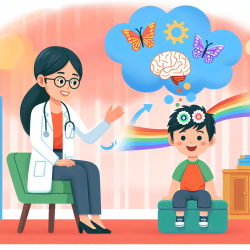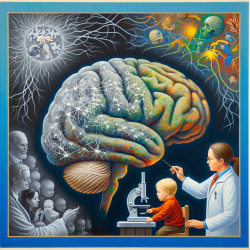Unlocking the Power of Data in Child Therapy: Lessons from Rural Iran
As a speech-language pathologist dedicated to improving outcomes for children, understanding the context in which they live and learn is crucial. A recent study on unintentional injuries in the rural population of Twiserkan, Iran, offers valuable insights that can be applied to enhance therapeutic practices. This study highlights the importance of data-driven decisions in crafting effective intervention strategies.
The Study: A Snapshot
The research conducted by Rezapur-Shahkolai et al. (2008) focused on unintentional injuries in Twiserkan, a rural district in Iran. Over a year, 134 injuries were documented, revealing a significant incidence rate of both fatal and non-fatal injuries. The study identified traffic injuries, particularly among motorcyclists, as a major concern, alongside home-related injuries like burns and falls.
Implications for Child Therapy
While the study primarily addresses injury prevention, the data can inform child therapy practices in several ways:
- Contextual Awareness: Understanding the environmental risks children face can help tailor therapy sessions to address specific challenges. For instance, if a child is recovering from a burn injury, therapy can incorporate safety education and strategies for coping with trauma.
- Community Engagement: The study emphasizes the role of local health workers (Behvarzes) in injury surveillance and prevention. Collaborating with community health workers can enhance the reach and effectiveness of therapy programs.
- Prevention Education: Educating families about injury prevention aligns with the study's findings. Therapists can incorporate safety education into their sessions, empowering children and families to adopt safer behaviors.
Encouraging Further Research
The study underscores the need for ongoing research into injury patterns and prevention strategies. Speech-language pathologists can contribute by:
- Participating in Community Studies: Engaging in local research initiatives can provide valuable data to refine therapeutic practices.
- Advocating for Data Collection: Encouraging schools and communities to maintain injury records can help identify trends and inform prevention efforts.
- Collaborating with Researchers: Partnering with researchers can lead to the development of comprehensive intervention strategies that address both communication needs and safety concerns.
Conclusion
The insights from the Twiserkan study highlight the importance of integrating data-driven approaches into child therapy practices. By understanding the broader context of a child's environment, therapists can develop more effective, tailored interventions. As we continue to prioritize the well-being of children, embracing data and collaboration will be key to achieving meaningful outcomes.
To read the original research paper, please follow this link: Unintentional injuries in the rural population of Twiserkan, Iran: A cross-sectional study on their incidence, characteristics and preventability.










